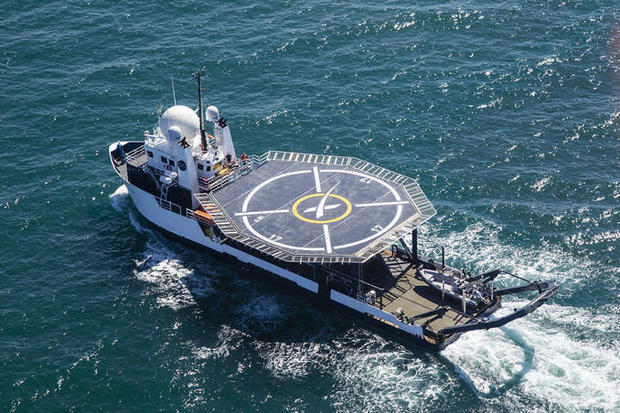Crew Dragon astronauts Douglas Hurley and Robert Behnken enjoyed wakeup messages from their young sons early Sunday before readying their ship for a fiery plunge back to Earth and splashdown in the Gulf of Mexico near Pensacola to close out a 64-day test flight.
“I’m happy you went into space, but I’m even happier that you’re coming back home,” called 10-year-old Jack Hurley.
“Wake up! Daddy, wake up!” called six-year-old Theo Behnken. “Don’t worry, you can sleep in tomorrow. Hurry home so we can go get my dog!”
Behnken thanked the boys for the “wonderful” call, adding “hopefully, the pressure’s all on whoever’s making the weather call because those boys seem excited to bring us home.”
“Yeah, we concur, that was great hearing them and happy to hear you,” a SpaceX flight controller replied. “And lucky for you, weather is looking great at Pensacola. Dragon’s also healthy and proceeding toward the primary deorbit opportunity.”
Hurley and Behnken, launched atop a SpaceX Falcon 9 rocket on May 30, undocked from the International Space Station Saturday evening, setting the stage for re-entry and the first water landing by U.S. astronauts in 45 years.
With Hurley and Behnken monitoring an automated return to Earth, the Crew Dragon’s no-longer-needed aft trunk section will be jettisoned, exposing the capsule’s heat shield, a few minutes before a planned 11-minute 22-second firing of the spacecraft’s forward thrusters at 1:56 p.m.
Moving through space at more than 17,000 mph, the deorbit rocket firing was designed to slow the craft by about 168 mph, just enough to drop the far side of its orbit deep into the atmosphere.
Approaching the Gulf of Mexico from the southwest, the Crew Dragon was expected to fall back into the discernible lower atmosphere around 2:36 p.m., its heat shield enduring temperatures up to 3,500 degrees as the ship rapidly decelerates in a blaze of atmospheric friction.
Eight minutes later, stabilizing drogue parachutes will be deployed, followed a minute later by four large, orange-and-white parachutes that will slow the ship’s descent to a much more sedate 15 mph or so. Splashdown is expected at 2:48 p.m.
The SpaceX recovery ship Go Navigator left port early Sunday and was expected to be on station for splashdown carrying medical personnel, support crews and initial responders with “fast boats” who have trained to reach the spacecraft within minutes. One of the ship’s two generators failed before leaving port, but managers said the vessel otherwise was healthy and no impact was expected.
Within an hour of splashdown, recovery crews were expected to stabilize and “safe” the capsule, haul it on board the Go Navigator, open the side hatch and help Hurley and Behnken out as they begin re-adjusting to gravity after two months in space.
Both astronauts said they expected a bit of nausea and possibly vomiting while bobbing about in the capsule awaiting recovery. During an earlier interview aboard the station, Hurley joked, “there’s a pretty good likelihood that we may see breakfast twice on that particular day.”
After initial medical checks, the astronauts will be flown by helicopter to a nearby airport where a NASA jet will be waiting to fly them back to the Johnson Space Center in Houston for debriefing and reunions with friends and family.
The Crew Dragon is the first spacecraft built in America and launched from U.S. soil since the space shuttle was retired in 2011. For the pas nine years, NASA has relied on Russia’s Soyuz spacecraft to ferry U.S. and partner agency astronauts to and from the station at some $80 million per seat.
The Crew Dragon and, eventually, Boeing’s Starliner CST-100 capsules are intended to end that sole reliance on Russia while opening up low-Earth orbit to private-sector development.
SpaceX launched and recovered an unpiloted Crew Dragon capsule last year and carried out a dramatic in-flight abort, again unpiloted, earlier this year. That cleared the way for Hurley and Behnken to blast off on the program’s first piloted mission, a test flight known as Demo 2.
The spacecraft has performed in near-flawless fashion throughout its first piloted mission and a successful landing is the last major hurdle before NASA can certify the spacecraft for operational crew rotation missions to and from the space station.



